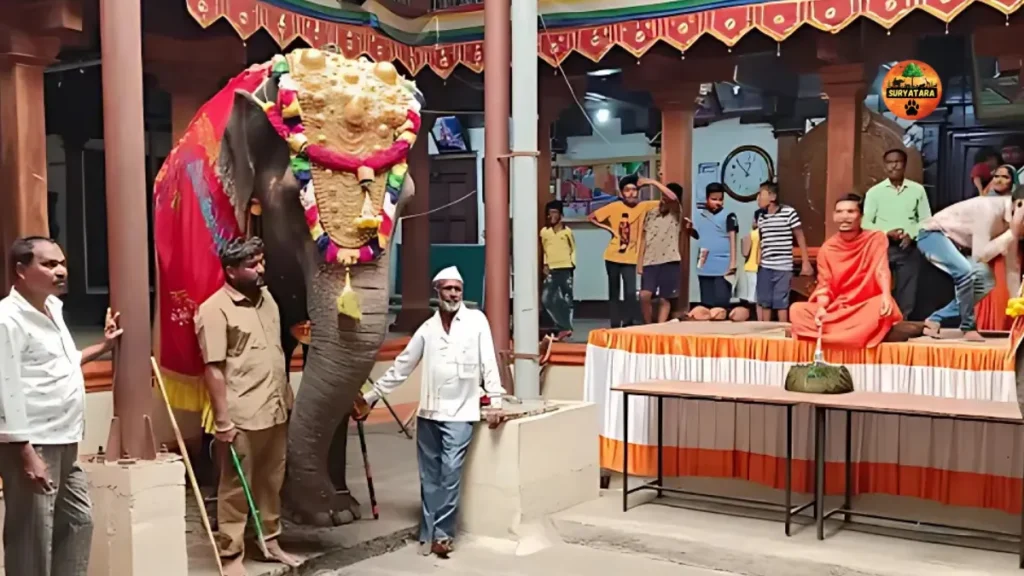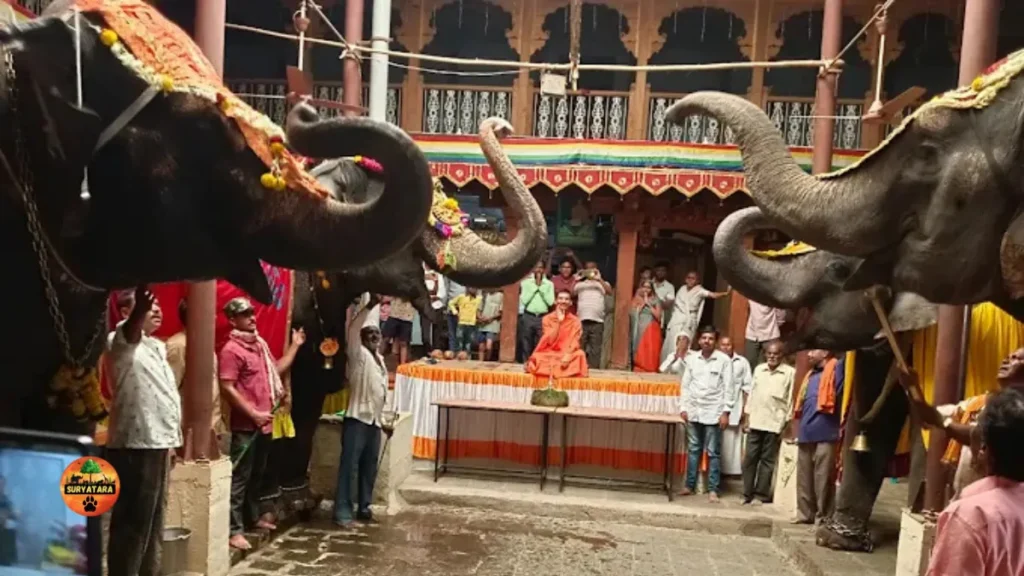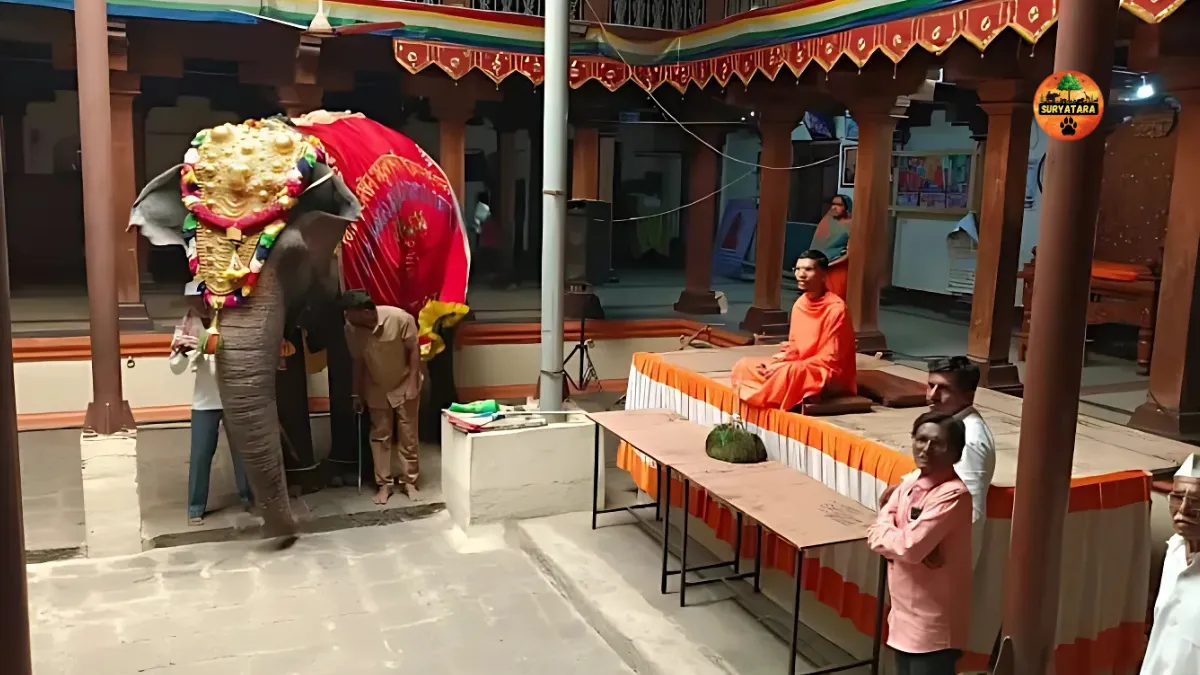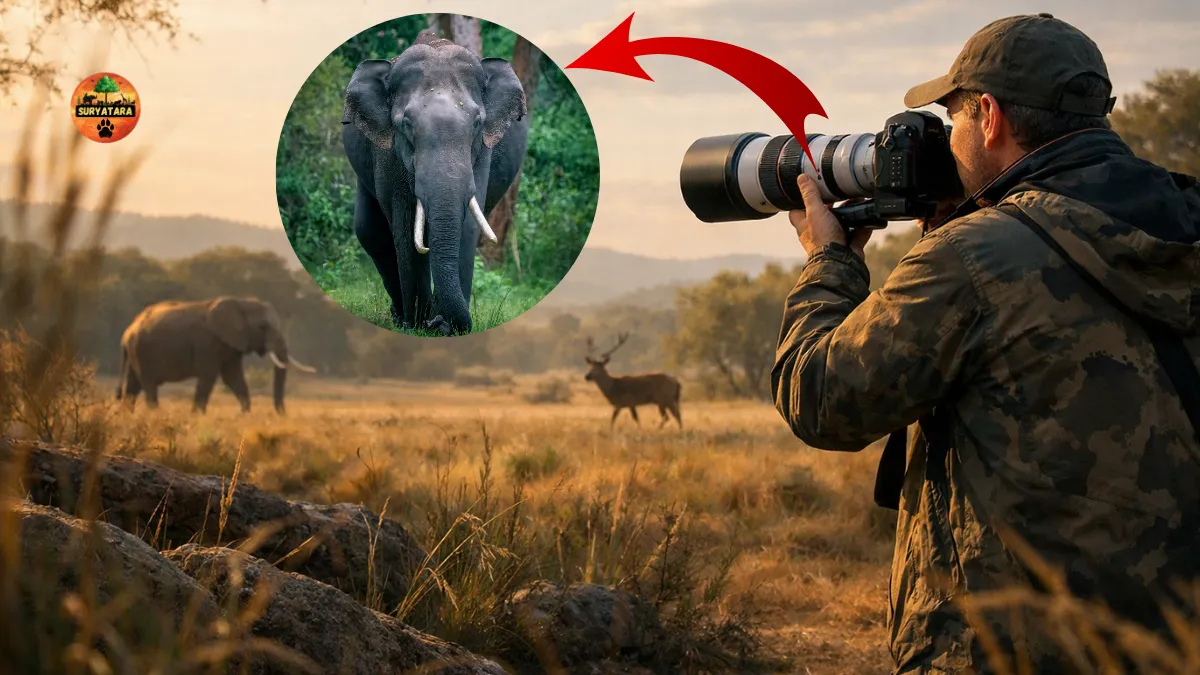Who is Madhuri elephant? This question has been making headlines recently in India’s wildlife and animal welfare community. Madhuri, also known as Mahadevi, is a 36-year-old female elephant whose life story reflects the complex relationship between humans and captive wildlife in the country. Her journey from a temple in Maharashtra to a proposed rehabilitation centre in Gujarat — and the legal and emotional debates that followed — has made her a subject of national attention.
Early Life and Background of Madhuri

Madhuri elephant, originally named Mahadevi, has spent most of her life in captivity. She was kept at the Swastishree Jinsen Bhattaraka Pattacharya Mahaswami Sansthan Math in Kolhapur, Maharashtra, where she participated in temple activities and rituals. Like many captive elephants in India, Madhuri became a symbol of devotion and tradition for the temple community.
However, over time, concerns about her health and living conditions began to emerge. Animal welfare organisations claimed that Madhuri was suffering from ailments linked to long-term captivity, including joint pain and stress-related issues.
The Rehabilitation Controversy

In early 2025, the Bombay High Court ordered that Madhuri be moved to a wildlife rehabilitation facility for better medical care. The chosen destination was Vantara, a state-of-the-art animal rescue and rehabilitation centre in Jamnagar, Gujarat, run by Reliance Industries and the Reliance Foundation.
While animal activists such as PETA India supported this move, local devotees in Kolhapur objected, claiming that Madhuri should remain in her familiar surroundings. This sparked a public debate over what is best for captive elephants — cultural tradition or specialised care in sanctuaries.
Key Facts About Madhuri Elephant
| Detail | Information |
|---|---|
| Name | Madhuri (also called Mahadevi) |
| Age | Around 36 years |
| Species | Asian Elephant (Elephas maximus) |
| Origin | Temple elephant from Kolhapur, Maharashtra |
| Current Status | Awaiting final decision on rehabilitation |
| Proposed Relocation Site | Vantara Wildlife Rehabilitation Centre, Jamnagar, Gujarat |
| Main Concern | Health, joint problems, welfare in captivity |
| Supporters of Relocation | PETA India, Wildlife activists |
| Opponents | Some local devotees and community members |
Why Madhuri’s Case Matters
The case of Madhuri elephant is not just about one animal — it reflects a larger question about the future of captive elephants in India. While elephants have cultural, religious, and traditional significance, their welfare in captivity is often compromised.
India has around 2,500 captive elephants, many of which work in temples, tourism, and logging. Cases like Madhuri’s are helping bring national attention to the need for better welfare standards, regular medical care, and, when possible, rehabilitation into more natural environments.
Also read: Best Cameras for Wildlife Photography in 2025
Legal and Welfare Perspectives
From a legal standpoint, the Wildlife Protection Act, 1972 allows for the protection and proper care of elephants, which are a Schedule I species — the highest category of protection in India. The Bombay High Court’s involvement shows the judiciary’s willingness to step in when welfare concerns are raised.
From a welfare perspective, experts argue that moving elephants like Madhuri to dedicated rehabilitation centres offers the best chance for a healthier, more natural life. These centres provide spacious enclosures, expert veterinary care, and opportunities for social interaction with other elephants.
Also read: Mahadevi Elephant vantara: Anant Ambani Proposes Rehabilitation Center in Kolhapur
Latest Developments
As of now, the legal process is ongoing. Vantara has assured that Madhuri will receive a safe, dignified, and medically supervised relocation if the court gives final approval. However, if the court decides otherwise, Madhuri may remain in Kolhapur under improved welfare conditions mandated by the authorities.
Also read: Madhuri Mahadevi Elephant Controversy – A Heartfelt Movement to Bring Her Back to Kolhapur
Conclusion: Who is Madhuri Elephant?
So, who is Madhuri elephant? She is more than just an individual animal — she is a living example of the intersection between culture, animal rights, and modern conservation ethics. Her story is prompting important discussions on how India can balance tradition with compassion, ensuring that elephants live with dignity and proper care.
The outcome of Madhuri’s case could influence future policies for thousands of captive elephants across the country, making her journey one of the most closely watched animal welfare stories of recent years.










